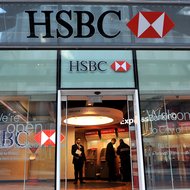Live Nation, the world’s biggest concert promoter and the owner of Ticketmaster, had $1.7 billion in revenue for the three months that ended in June, up 8.3 percent from the same period last year. The company’s net income was $59 million, or 30 cents a share, about 20 cents above analysts’ expectations.
Live Nation’s division that puts on concerts, its biggest business segment, had $1.2 billion in revenue, up 11 percent. In a conference call with investors, Michael Rapino, the chief executive, called the results “a set-up for what looks to be a record summer.” Concert ticket sales for the first six months of the year were up 26 percent from the same period of 2012, propelled by tours by Beyoncé, Rihanna and Kid Rock.
Closing at $16.32, Live Nation’s stock declined 1.86 percent for the day, but was up about 6 percent in off-hours trading. Since the beginning of the year, its stock price has grown more than 70 percent.
Live Nation profits from nearly every segment of the concert business, and is poised to capitalize on improved consumer discretionary spending. As a promoter, the company makes money when attendance is high at concerts and festivals, as well as from advertising and ancillary sales like food and parking; as a ticketer, it also collects a portion of the surcharges added to each ticket.
After years of steady growth, the concert industry was badly hit by the recession in 2010, but it has gradually recovered. Pollstar, a trade magazine, said that ticket sales for the top 50 tours was up 23 percent, to $1.8 billion, for the first half of the year.
One area of the music business in which Live Nation has been particularly aggressive is in the popular electronic dance genre. The company has bought several concert and festival promoters over the years, and says that it now has 17 festivals across the United States and Europe, which this summer it expects will draw 2.5 million people.
In the conference call, Mr. Rapino also confirmed one of the most closely watched deals in the concert business: Live Nation’s investment in Insomniac, the promoter behind the Electric Daisy Carnival series of dance festivals. When news of a possible deal emerged earlier this year, Live Nation was reported to have bought a 50 percent stake in Insomniac for somewhat less than $50 million.
Mr. Rapino did not give details about the transaction on the call. But in a filing on Tuesday with the Securities and Exchange Commission, Live Nation reported a good will charge of $48.1 million “primarily associated with the May 2013 acquisition of a controlling interest in a company that promotes festivals.”

Article source: http://www.nytimes.com/2013/08/07/business/media/strong-earnings-for-live-nation-in-concert-season.html?partner=rss&emc=rss




